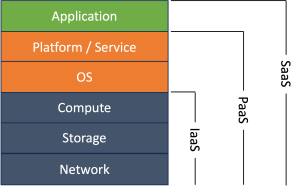There have been several high profile data breaches and ransomware attacks in the news lately and the common theme between all of them has been the disclosure (or threat of disclosure) of customer data. The after effects of a data breach or ransomware attack are far reaching and typically include loss of customer trust, refunds or credits to customer accounts, class action lawsuits, increased cyber insurance premiums, loss of cyber insurance coverage, increased regulatory oversight and fines. The total cost of these after effects far outweigh the cost of implementing proactive security controls like proper business continuity planning, disaster recovery (BCP/DR) and data governance, which begs the question – if data is our most valuable asset, why aren’t we treating it that way?
The Landscape Has Shifted
Over two decades ago, the rise of free consumer cloud services, like the ones provided by Google and Microsoft, ushered in the era of mass data collection in exchange for free services. Fast forward to today, the volume of data growth and the value of that data has skyrocketed as companies have shifted to become digital first or mine that data for advertising purposes and other business insights. The proliferation of AI has also ushered in a new data gold rush as companies strive to train their LLMs on bigger and bigger data sets. While the value of data has increased for companies, it has also become a lucrative attack vector for threat actors in the form of data breaches or ransomware attacks.
The biggest problem with business models that monetize data is: security controls and data governance haven’t kept pace with the value of the data. If your company has been around for more than a few years chances are you have a lot of data, but data governance and data security has been an afterthought. The biggest problem with bolting on security controls and data governance after the fact is it is hard to reign in pandoras box. This is also compounded by the fact that it is hard to put a quantitative value on data, and re-architecting data flows is seen as a sunk cost to the business. The rest of the business may find it difficult to understand the need to rearchitect their entire business IT operations since there isn’t an immediate and tangible business benefit.
Finally, increased global regulation is changing how data can be collected and governed. Data collection is shifting from requiring consumers to opt-out to requiring them to explicitly opt-in. This means consumers and users (an their associated data) will no longer be the presumptive product of these free services without their explicit consent. Typically, increased regulation also comes with specific requirements for data security, data governance and even data sovereignty. Companies that don’t have robust data security and data governance are already behind the curve.
False Sense Of Security
In addition to increased regulation and a shifting business landscape, the technology for protecting data really hasn’t changed in the past three decades. However, few companies implement effective security controls on their data (as we continue to see in data breach notifications and ransomware attacks). A common technology used to protect data is encryption at rest and encryption in transit (TLS), but these technologies are insufficient to protect data from anything except physical theft and network snooping (MITM). Both provide a false sense of security related to data protection.
Furthermore, common regulatory compliance audits don’t sufficiently specify protection of data throughout the data lifecycle beyond encryption at rest, encryption in transit and access controls. Passing these compliance audits can give a company a false sense of security that they are sufficiently protecting their data, when the opposite is true.
Just because you passed your compliance audit, doesn’t mean you are good to go from a data security and governance perspective.
Embrace Best Practices
Businesses can get ahead of this problem to make data breaches and ransomware attacks a non-event by implementing effective data security controls and data governance, including BCP/DR. Here are some of my recommendations for protecting your most valuable asset:
Stop Storing and Working On Plain Text Data
Sounds simple, but this will require significant changes to business processes and technology. The premise is the second data hits your control it should be encrypted and never, ever, unencrypted. This means data will be protected even if an attacker accesses the data store, but it also will mean the business will need to figure out how to modify their operations to work on encrypted data. Recent technologies such as homomorphic encryption have been introduced to solve these challenges, but even simpler activities like tokenizing the data can be an effective solution. Businesses can go one step further and create a unique cryptographic key for every “unique” customer. This would allow for simpler data governance, such as deletion of data.
Be Ruthless With Data Governance
Storage is cheap and it is easy to collect data. As a result companies are becoming digital data hoarders. However, to truly protect your business you need to ruthlessly govern your data. Data governance policies need to be established and technically implemented before any production data touches the business. These policies need to be reviewed regularly and data should be purged the second it is no longer needed. A comprehensive data inventory should be a fundamental part of your security and privacy program so you know where the data is, who owns it and where the data is in the data lifecycle.
The biggest problem with business models that monetize data is: security controls and data governance haven’t kept pace with the value of the data.
Ruthlessly governing data can have a number of benefits to the business. First, it will help control data storage costs. Second, it will minimize the impact of a data breach or ransomware attack to the explicit time period you have kept data. Lastly, it can protect the business from liability and lawsuits by demonstrating the data is properly protected, governed and/or deleted. (You can’t disclose what doesn’t exist).
Implement An Effective BCP/DR and BIA Program
Conducting a proper Business Impact Analysis (BIA) of your data should be table stakes for every business. Your BIA should include what data you have, where it is and most importantly, what would happen if this data wasn’t available? Building on top of the BIA should be a comprehensive BCP/DR plan that appropriately tiers and backs up data to support your uptime objectives. However, it seems like companies are still relying on untested BCP/DR plans or worse solely relying on single cloud regions for data availability.
Every BCP/DR plan should include a write once, read many (WORM) backup of critical data that is encrypted at the object or data layer. Create WORM backups to support your RTO and RPO and manage the backups according to your data governance plan. Having a WORM backup will prevent ransomware attacks from being able to encrypt the data and if there is a data breach it will be meaningless because the data is encrypted. BCP / DR plans should be regularly tested (up to full business failover) and security teams need to be involved in the creation of BCP/DR plans to make sure the data will have the confidentiality, integrity and availability when needed.
Don’t Rely On Regulatory Compliance Activities As Your Sole Benchmark
My last recommendation for any business is – just because you passed your compliance audit, doesn’t mean you are good to go from a data security and governance perspective. Compliance audits exist as standards for specific industries to establish a minimum bar for security. Compliance standards can be watered down due to industry feedback, lobbying or legal challenges and a well designed security program should be more comprehensive than any compliance audit. Furthermore, compliance audits are typically tailored to specific products and services, have specific scopes and limited time frames. If you design your security program to properly manage the risks to the business, including data security and data governance, you should have no issues passing a compliance audit that assesses these aspects.
Wrapping Up
Every business needs to have proper data security and data governance as part of a comprehensive security program. Data should never be stored in plain text and it should be ruthlessly governed so it is deleted the second it is no longer needed. BCP/DR plans should be regularly tested to simulate data loss, ransomware attacks or other impacts to data and, while compliance audits are necessary, they should not be the sole benchmark for how you measure the effectiveness of your security program. Proper data protection and governance will make ransomware and data breaches a thing of the past, but this will only happen if businesses stop treating data as a commodity and start treating it as their most valuable asset.










